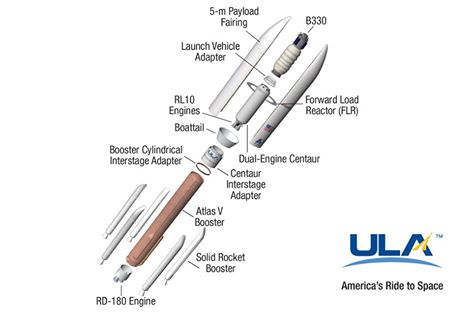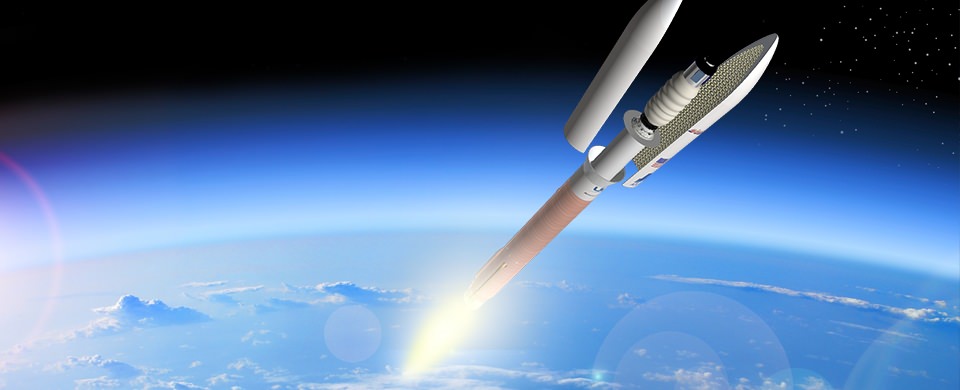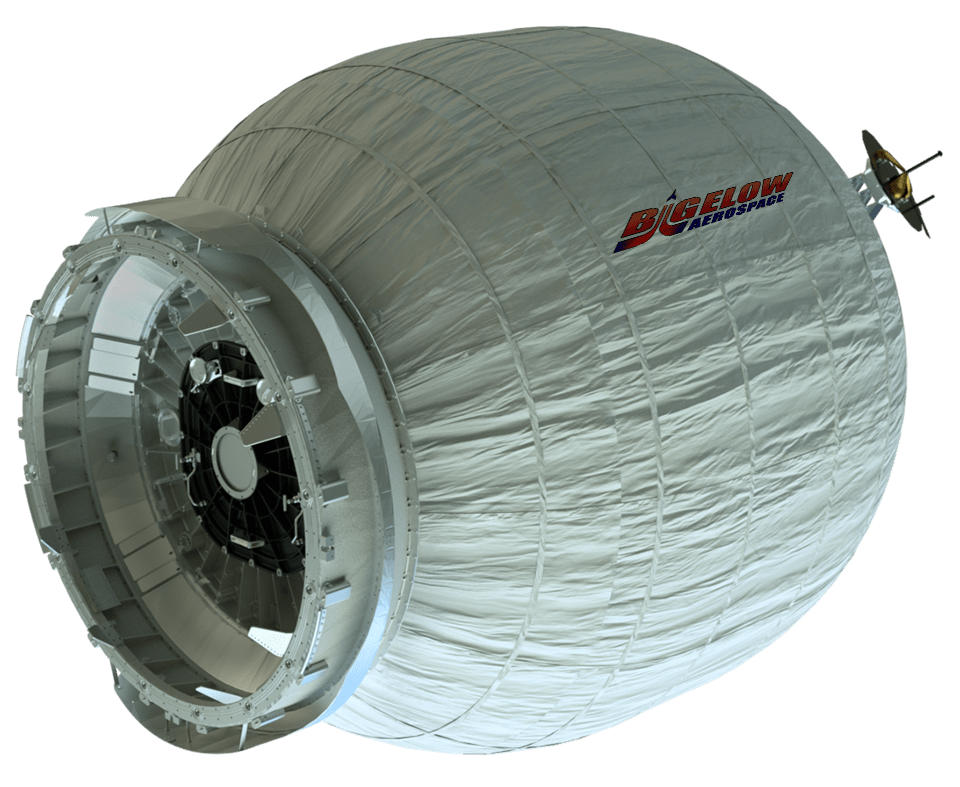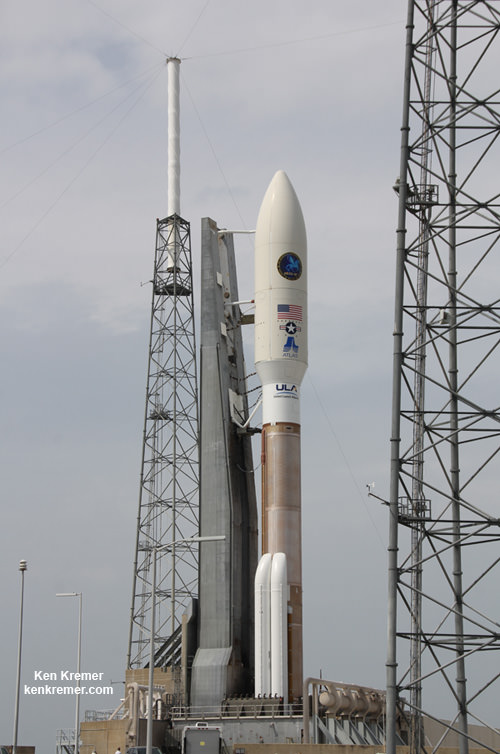
Interior schematic view of Bigelow Aerospace B330 expandable module. Credit: Bigelow Aerospace
Bigelow Aerospace and United Launch Alliance (ULA) announced they are joining forces to develop and launch the world’s first commercial space habitat to Low Earth Orbit (LEO) by 2020 – potentially as a huge and revolutionary new addition to the International Space Station (ISS).
The expandable habitat will be based on the Bigelow Aerospace B330 module and would be carried to orbit on the most powerful version of ULA’s venerable Atlas V rocket.
Robert Bigelow, founder and president of Bigelow Aerospace, and Tory Bruno, ULA president and CEO announced the partnership on the fully commercial space habitat during a joint media briefing held at the 32nd Space Symposium in Colorado Springs, Colorado on April 11.
“We could not be more pleased than to partner with Bigelow Aerospace and reserve a launch slot on our manifest for this revolutionary mission,” said Tory Bruno, ULA president and CEO.
The B330 boasts an interior volume of 330 cubic meters (12,000 cu ft). It measures 57 feet (17.3 m) in length, weighs 20 tons and offers a design life span of 20 years.
If NASA agrees to attach the B330 to the ISS, the stations habitable volume would grow by a whopping 30% in one giant step.
“The alliance represents the first-ever commercial partnership between a launch provider and a habitat provider,” according to ULA.
The advantage of expandable habitats is that they offer a much better volume to weight ratio compared to standard rigid structures, such as all of the current ISS pressurized modules.
The station based B330 concept is named XBASE or Expandable Bigelow Advanced Station Enhancement.

The additional volume would enable a significant increase in the orbiting outposts ability to support research and development operations and manufacturing processes for NASA and commercial users.
Bigelow further views the B330 and follow on modules as a potential destination for space tourism and a beneficial component for human missions to the Moon and Mars.
“We are exploring options for the location of the initial B330 including discussions with NASA on the possibility of attaching it to the International Space Station (ISS),” said Robert Bigelow, founder and president of Bigelow Aerospace.
“In that configuration, the B330 will enlarge the station’s volume by 30% and function as a multipurpose testbed in support of NASA’s exploration goals as well as provide significant commercial opportunities. The working name for this module is XBASE or Expandable Bigelow Advanced Station Enhancement.”
Bigelow said his firm plans to build two B330 modules by 2020.
The B330 would be tucked inside the cavernous payload fairing of the Atlas V which would launch in the 552 configuration with 5 meter diameter fairing with 5 solid rocket booster attached to the first stage and a dual engine Centaur second stage.

“When looking for a vehicle to launch our large, unique spacecraft, ULA provides a heritage of solid mission success, schedule certainty and a cost effective solution,” says Bigelow.
The SpaceX falcon 9 fairing is not big enough to house the B330.
“SpaceX, they do not have the capability with the fairing size that is necessary to accommodate the B330. So that is not even a choice,” Bigelow stated.
The B330 partnership announcement follows hot on the heels of last weeks successful launch of Bigelow’s experimental BEAM expandable module on a SpaceX Falcon 9 rocket on a mission to the ISS on April 8.

BEAM is tucked inside the rear truck section of the SpaceX Dragon now berthed at the station. It will soon be attached to a side port on the Harmony module.
“This innovative and game-changing advance will dramatically increase opportunities for space research in fields like materials, medicine and biology,” said Bruno.
“It enables destinations in space for countries, corporations and even individuals far beyond what is available today, effectively democratizing space. We can’t begin to imagine the future potential of affordable real estate in space.”
The B330 could also function as a free flyer but would work best at the station, Bigelow noted at the briefing.
Both of the commercial space taxis being developed under NASA’s commercial crew program (CCP) could dock at the B330; the Boeing Starliner and the SpaceX crew Dragon, Bigelow stated.
Multiple B330 modules could also be joined together in orbit to form a free flying commercial space station.

Stay tuned here for Ken’s continuing Earth and planetary science and human spaceflight news.
………….
Learn more about SpaceX, ULA, commercial space, NASA Mars rovers, Orion, SLS, ISS, Orbital ATK, Boeing, Space Taxis, NASA missions and more at Ken’s upcoming outreach events:
Apr 17: “NASA and the Road to Mars Human Spaceflight programs”- 1:30 PM at Washington Crossing State Park, Nature Center, Titusville, NJ – http://www.state.nj.us/dep/parksandforests/parks/washcros.html

Does anyone know who will be building their “personal hygiene equipment”? Please tell me it won’t be Wolowitz.
Don’t let him touch the toilet! LOL